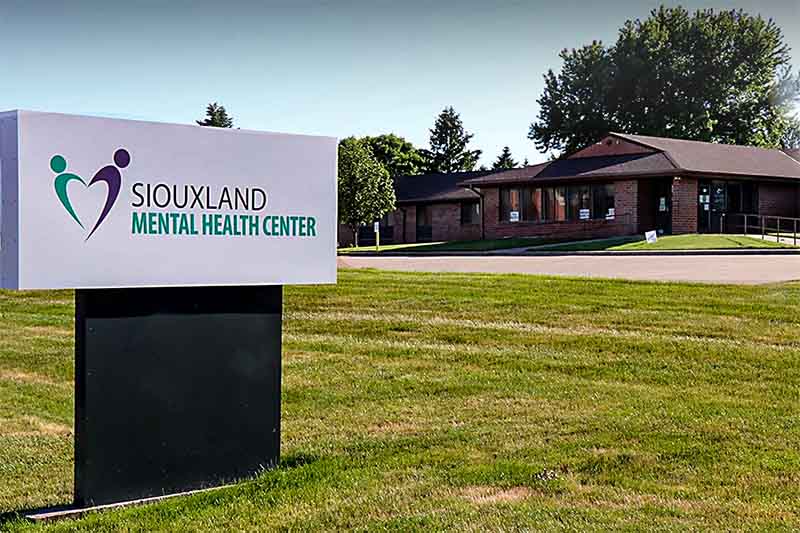The Impact of Certified Community Behavioral Health Clinics
In just a few short years since the first Certified Community Behavioral Health Clinic (CCBHC) opened their doors in 2017, the movement has revolutionized behavioral health in the U.S. This innovative treatment model is delivering impressive results, dramatically increasing access to mental health and substance use disorder (SUD) treatment, expanding states’ capacity to address the drug overdose crisis, and strengthening partnerships between law enforcement, schools, hospitals, and behavioral health organizations. Today there are over 2 million people served by over 500 CCBHCs operating across the U.S., with a presence in all but a handful of states. But what is a CCBHC? How are CCBHCs funded? And how can becoming a CCBHC help your organization raise the bar for high-quality, evidence-based mental health care? Let’s take a look.
What is a CCBHC?
The CCBHC model was designed to address the skyrocketing demand for mental health and substance use disorder treatment in the U.S. CCBHCs make it easy for people to access high-quality, integrated care, no matter where they live. As specially designated and government-funded clinics, CCBHCs serve anyone who walks through the door, regardless of their acuity and insurance status. Certified by the state or having attested to meeting all the criteria of the CCBHC, these agencies must meet the highest standards for quality, safety, and efficacy of care. CCBHCs must meet several requirements, including:
- Ensuring timely access to integrated, evidence-based mental health and substance use disorder services, including 24/7 crisis response and medication-assisted treatment (MAT).
- Meeting strict standards for quality of care and evidence-based practice, with timely reporting.
- Maintaining adequate and appropriate levels of staffing to meet community needs.
- Ensuring coordination with external social services, criminal justice, and education systems.
The certification process is intensive and ensures that each clinic is compliant with applicable regulations, as well as consistent with established CCBHC criteria, cost reporting, and performance measurement.
What Services do CCBHCs Provide?
At a minimum, CCBHCs must deliver nine core services to be certified, including:
- Crisis services
- Treatment planning
- Screening, assessment, diagnosis, and risk assessment
- Outpatient mental health and substance use services
- Targeted case management
- Outpatient primary care screening and monitoring
- Community-based mental health care for veterans
- Peers, family support, and counselors
- Psychiatric rehabilitation services
CCBHCs can deliver services either directly or through partnering with other designated collaborating organizations (DCOs) in the community.
How CCBHC Funding Differs from Traditional Models
CCBHCs are government-funded through a variety of sources:
- Section 223 CCBHC Medicaid demonstration program
- SAMHSA administered CCBHC Expansion (CCBHC-E) grants
- Independent state programs
Demonstration CCBHCs and States Certified CCBHCs are paid for services using a prospective payment system, or PPS, rather than the traditional fee-for-service (FFS) model. The PPS approach is specific to each clinic and the needs of their local community. This funding approach ensures that clinics can more effectively cover the anticipated costs of care. With PPS, organizations get greater flexibility to hire new or specialized staff as needed, implement the technology and data collection tools needed, and add new services in response to the unique needs of their local service area. Clinics can prioritize services that best suit the needs of their patients, rather than those that offer the highest margins.
The PPS approach also means that clinics can be reimbursed for non-billable activities, like care coordination and outreach, as well as time spent building more effective partnerships with community partners, like hospitals, and police. Since insurers are now required to cover core services under the CCBHC model, becoming a CCBHC can enhance relationships with other payers as well.
How CCBHCs are Benefiting Organizations, Employees, and Patients/Clients
The CCBHC model is helping organizations across the country address health disparities, improve access to care, and alleviate the behavioral health workforce shortage. According to the National Council for Mental Wellbeing’s 2022 CCBHC Impact Report conducted by The Harris Poll, CCBHCs:
- Increased the number of people served per clinic by 23%, serving on average more than 900 more people per clinic.
- Reduced time to access mental health and SUD treatment by 86%, from the national average wait time of 49 days to 7 days or less.
- Significantly increased access to certain forms of SUD treatment; for example, 82% of CCBHCs offer one or more forms of medication-assisted treatment (MAT) for substance use compared to just 56% of SUD clinics nationwide.
- Hired 6,220 new staff positions, or an average of 27 new staff per clinic, with an estimated 11,240 new staff positions added across all CCBHCs and grantees.
For employees, CCBHCs can improve the overall employee experience. With CCBHC PPS cost-based reimbursement, organizations can increase staffing levels, which reduces workplace stress and burnout for employees. They can use CCBHC funding to increase employee retention with higher salaries and training opportunities for evidence-based practices. Many employees also experience increased job satisfaction from working within a model that delivers higher quality care and meets more needs, where resources were previously limited.
For patients, the impacts are equally dramatic. With ready access to a comprehensive range of fully integrated services, patient experience care outcomes improve significantly. For example, CCBHCs are diverting people in crisis from hospitals, emergency departments, and jails, including:
- 72% reduction in hospitalization
- 40.7% reduction in homelessness
- 60.3% less time in jail
The results make clear that the CCBHC model delivers impressive benefits for all: the organizations that adopt the model, the employees that deliver the services, and the clients who access the services to improve their mental health and well-being, and their lives.
How the Right Technology Enables CCBHC Adoption
The CCBHC model requires efficient care coordination across the provider ecosystem, as well as detailed, data-driven reporting on care delivery and treatment outcomes. Technology is so critical to successful CCBHC adoption that 94% of current CCBHCs either already conduct electronic information sharing with care coordination partners or intend to do so.
Adopting the CCBHC model can fundamentally change an organization’s technology infrastructure, with new requirements for the tech stack, including:
- An electronic health record system (EHR) that supports mental health and SUD services across the continuum of care, such as Qualifacts’ Credible, CareLogic, or InSync EHRs, with integrated care capabilities for DCOs or in-house primary care models
- Qualifacts mobile tools and telehealth platforms to enable providers and patients to work and access care from remote locations.
- Patient tools, such as Qualifacts online patient portal, to enable convenient access, document exchange, and increased engagement.
- Data analysis and reporting tools that integrate and aggregate data across healthcare IT systems, such as through the behavioral health solutions from Qualifacts to better predict and manage care and optimize outcomes.
To participate in a CCBHC program, an organization must establish a healthcare IT system certified by the Office of the National Coordinator for Health Information Technology (ONC) Health IT Certification Program (45 CFR §170.314(a)(14)). With behavioral healthcare solutions from Qualifacts, including OnCall Virtual Care Solutions, organizations can ensure they have the healthcare IT they need to be successful in CCBHC adoption.
Evaluating the CCBHC Model for your Organization
The CCBHC model is proving to be a game-changing treatment model for behavioral health. Having an integrated technology stack in place is essential for successful implementation. Qualifacts solutions such as the Credible, CareLogic, and InSync EHRs and OnCall telehealth and online patient portal solutions, are the backbone of CCBHCs. Integrated IT for behavioral health enables organizations to provide accessible and high-quality care for all patients—including those from diverse backgrounds and underserved areas. It also empowers providers and staff with comprehensive data to monitor, manage, and optimize service delivery. With the right healthcare IT stack, organizations can realize all the benefits of a CCBHC model, including accessible treatment, coordinated care, improved case management, and better-quality outcomes.
Learn more here about how the right technology can help you adopt the CCBHC model and make a real difference in your community.




